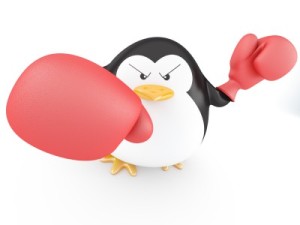
When Google rolled out “Panda”, a major change to their search results ranking algorithm, the changes left many business owners reeling as traffic for some sites dropped by the thousands in a matter of days.
You may have just gotten used to some of the Panda changes when its counterpart, Google Penguin, came waddling in and cold-shouldered your website out of even more traffic.
In a world where Google dominates the search engine scene, knowing how to navigate all the changes that have happened in the last year or two can mean the difference between a site that receives traffic from Google and a site that doesn’t.
How the Changes Impact SEO
Before Panda, Search Engine Optimization (SEO) seemed pretty simple. Choose keywords users were searching for from Google’s keyword tool and add them into your article or content. While this was effective at helping up your rank in the search engines, the problem was that a lot of low quality sites sprang up and plugged in those same keywords without offering any real value to the site visitor. At times, a site would rank fairly high at Google but only have keywords and ads on the page.
Google’s changes with Panda and Penguin are aimed at leveling the playing field for you as a business owner. Instead of plugging in a keyword three times and adding it to one of your headings, you now need to make sure that you offer content that relates to that keyword and is of value to the site visitor. The world of SEO has changed drastically from two years ago and all the changes can be quite confusing, but we’ve got tips to help you deal.
Tips to Help Your SEO Bottom Line
Fortunately, there are some very specific things that Google seems to be looking for in the top-ranked sites.
- Offer great content that isn’t like anything else offered by your competitors.
- Update regularly as the individuals who rank pages for Google are told to look for recent articles and content.
- Go easy on the ads. Google will penalize your ranking if your site seems more spammy than informational.
- Still use keywords, but use them naturally. There is no need to artificially insert keywords a specific number of times.
- Still use backlinks, but be careful about which sites are linking to you. Stay away from sites with a ton of links or ads.
- Do get a social influence. Set up a page for your biz on Facebook and Twitter and link to your site. Ask others to post news and links to your site as well on their social networks.
Avoid:
- Too many internal links. While this may have worked to up search engine rankings at one time, it is now frowned upon by Google. Link only when it feels natural to do so and adds value to your article.
- Too many keywords. Vary your words. It reads more naturally and will help you stay away from the appearance of keyword stuffing.
- Changing your URLs. Even with redirects, it can look like you are trying to tweak keywords and artificially inflate your ranking. In addition, visitors who bookmarked the old page may grow frustrated.
It doesn’t appear that Google plans to stop the algorithm changes anytime soon.The best course of action is to have an understanding of the Google Penguin SEO changes, and focus on creating quality content that will help your readers. This is what Google is looking for as they rank sites and this is what will keep your site visitors coming back time and time again.
Kim Stiglitz
